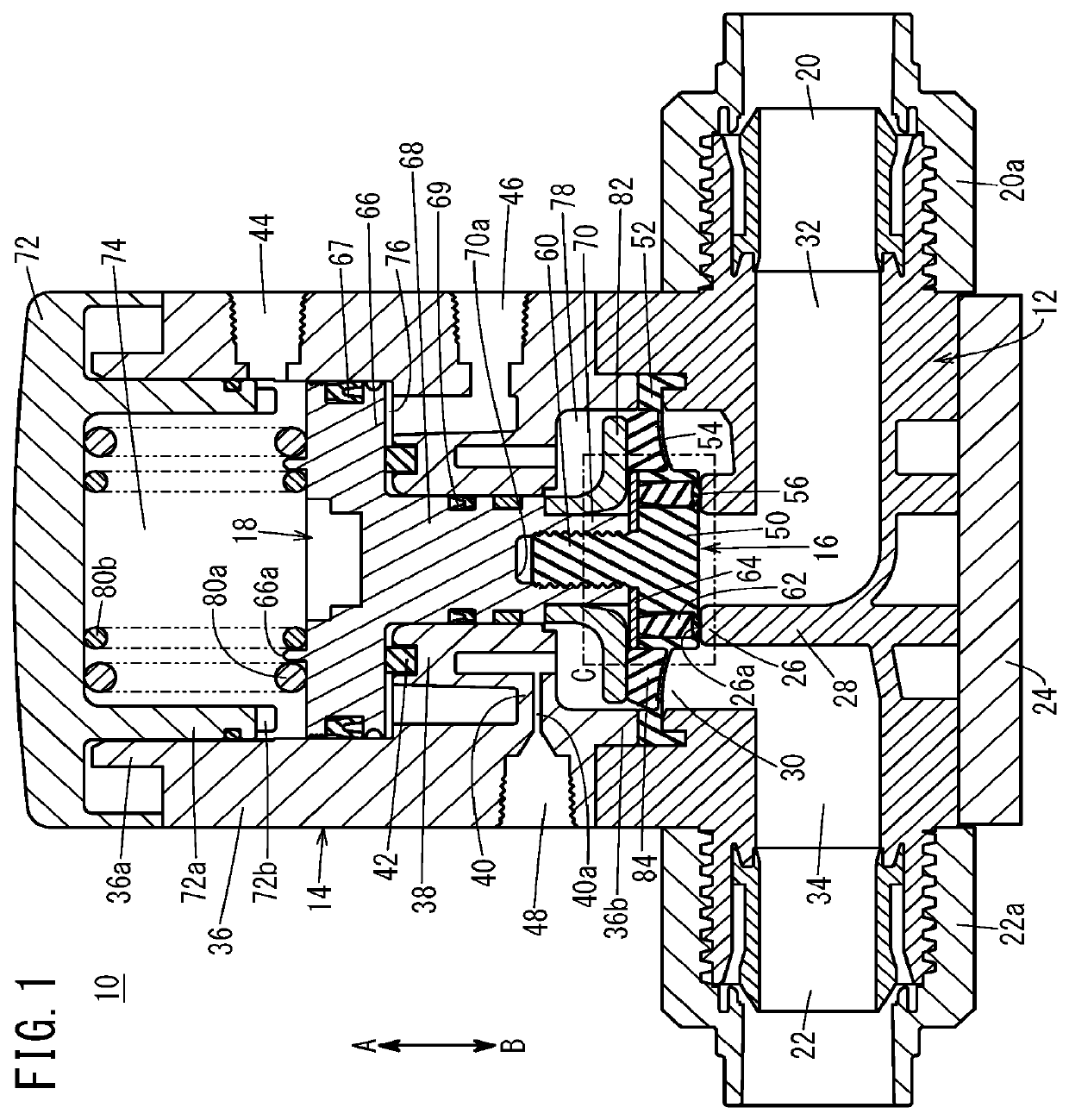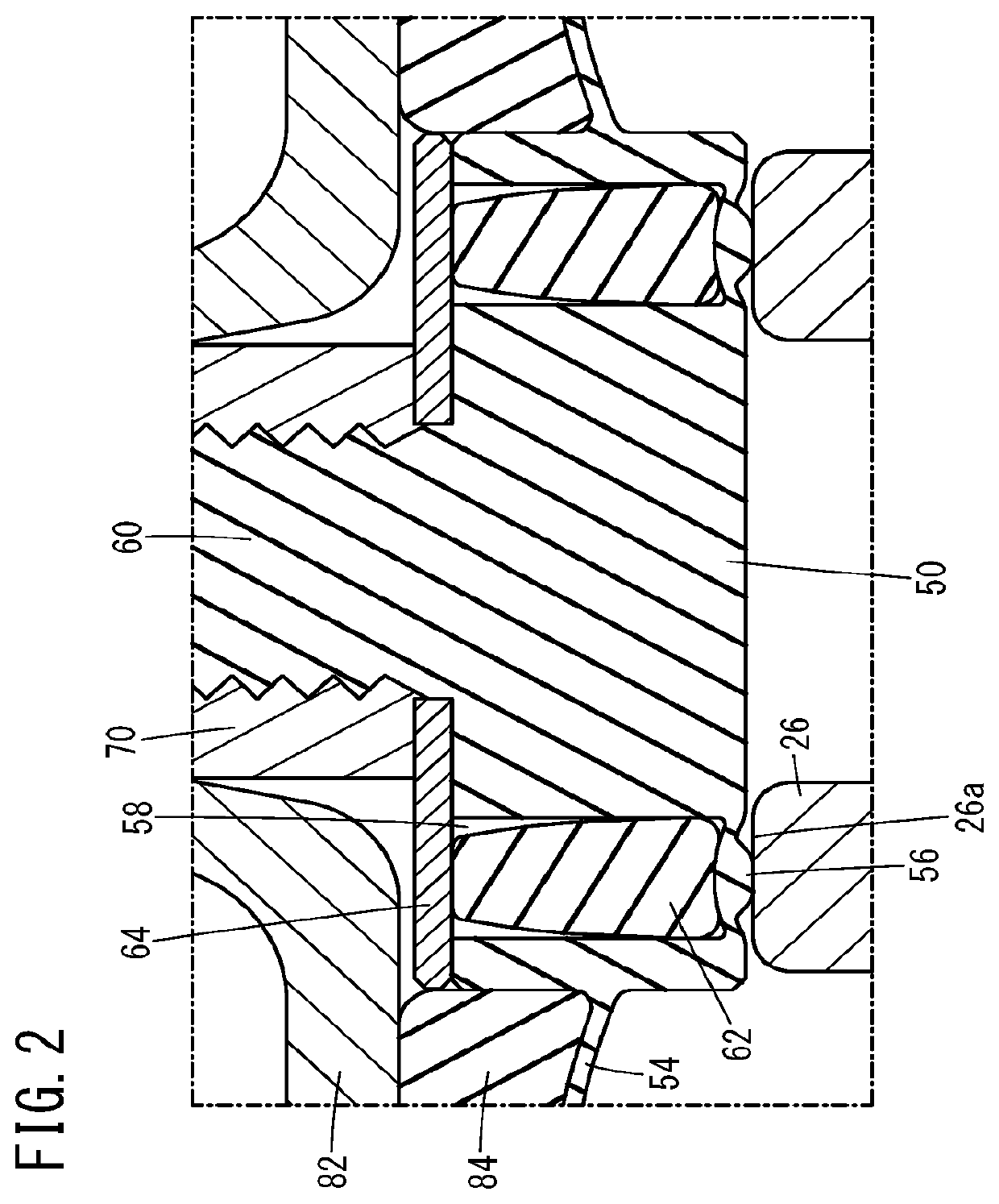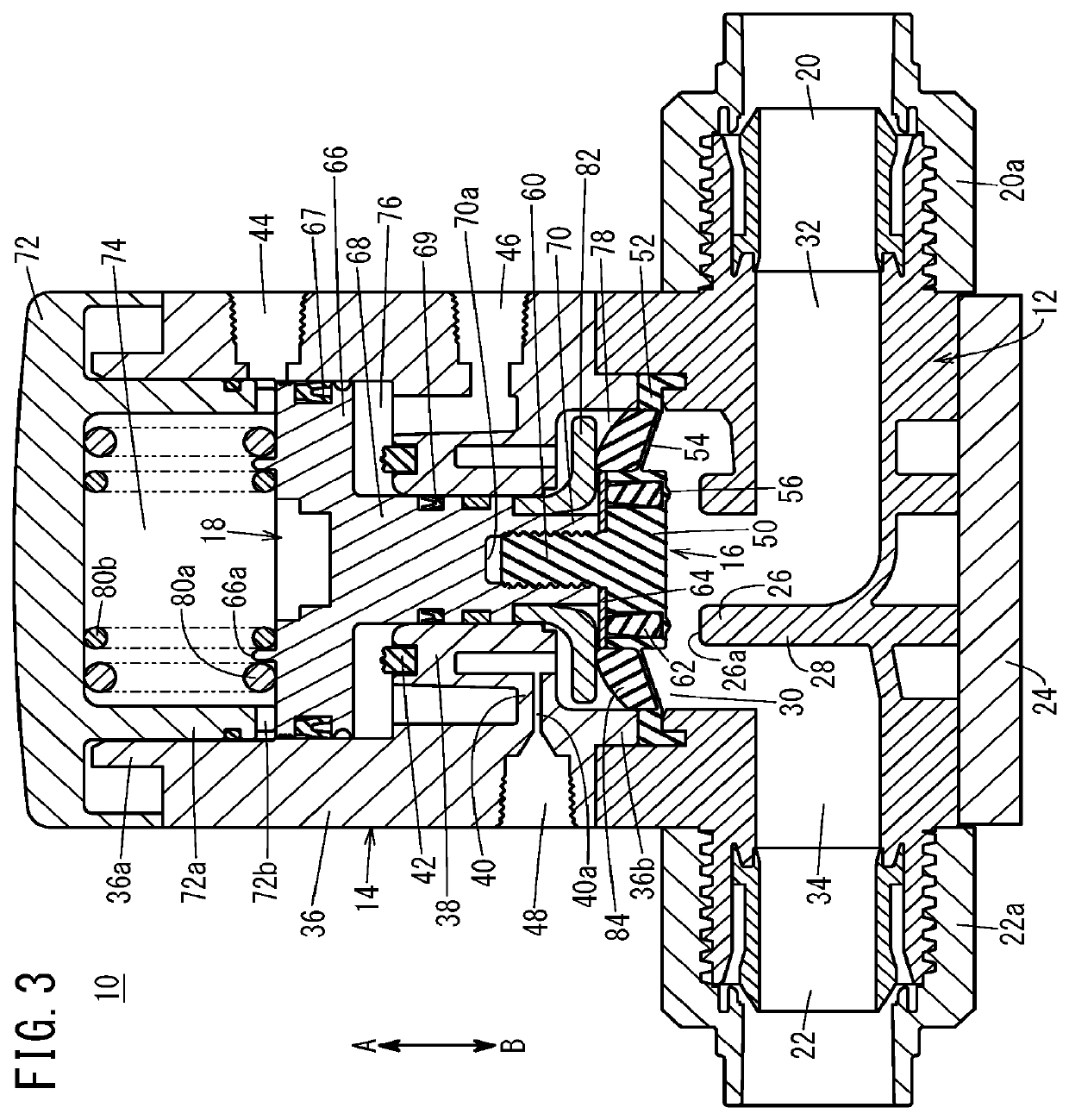Two-way valve
a two-way valve and valve body technology, applied in the direction of diaphragm valves, valve housings, engine diaphragms, etc., can solve the problems of easy tearing, particle production, and reduced durability, and achieve the effect of reducing durability and deformation
- Summary
- Abstract
- Description
- Claims
- Application Information
AI Technical Summary
Benefits of technology
Problems solved by technology
Method used
Image
Examples
first embodiment
[0020]A two-way valve 10 according to a first embodiment of the present invention will now be described with reference to FIGS. 1 to 5. The two-way valve 10 includes a body part 12 having a primary port 20 and a secondary port 22 formed therein, a bonnet 14 joined to an upper portion of the body part 12, a diaphragm valve 16, and a piston 18. The body part 12 and the bonnet 14 constitute the valve body.
[0021]The body part 12 is made of a metal material such as aluminum alloy or a resin material such as a fluororesin (e.g., PFA). In the body part 12, the primary port 20, into which pressurized fluid flows, and the secondary port 22, from which the pressurized fluid flows out, are coaxially aligned to face each other. A primary coupling 20a for tube connection is attached to the primary port 20, and thereby the primary port 20 is connected to a first pressurized fluid supply source (not illustrated) via a tube. A secondary coupling 22a for tube connection is attached to the secondary ...
second embodiment
[0050]Next, a two-way valve 90 according to a second embodiment of the present invention will be described with reference to FIGS. 6 to 8. The second embodiment is different from the first embodiment in terms of the structure of the damper member and the surrounding structure. In the two-way valve 90 according to the second embodiment, the same reference numerals and symbols are used for components identical or equal to those in the two-way valve 10 described above, and the detailed descriptions will be omitted.
[0051]A damper member 92 according to the second embodiment is configured as a coned-disk spring. An annular protrusion 93 is formed on the upper end surface of the inner tubular portion 38 of the bonnet 14, and a first tapered surface 94 is formed inside the annular protrusion 93. The first tapered surface 94 is inclined downward toward the inside. The damper member 92 is disposed inside the annular protrusion 93, and the outer peripheral edge of the damper member 92 engages...
PUM
 Login to View More
Login to View More Abstract
Description
Claims
Application Information
 Login to View More
Login to View More - R&D
- Intellectual Property
- Life Sciences
- Materials
- Tech Scout
- Unparalleled Data Quality
- Higher Quality Content
- 60% Fewer Hallucinations
Browse by: Latest US Patents, China's latest patents, Technical Efficacy Thesaurus, Application Domain, Technology Topic, Popular Technical Reports.
© 2025 PatSnap. All rights reserved.Legal|Privacy policy|Modern Slavery Act Transparency Statement|Sitemap|About US| Contact US: help@patsnap.com



